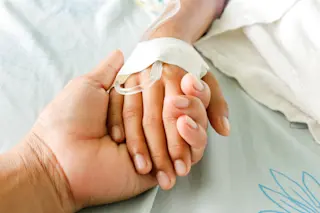There are some things that life never prepares you for — like the dreaded phone call that a loved one is in a coma, and you’re responsible for making their end-of-life decisions if they don’t wake up. These decisions are further complicated by the fact that there’s no true test for consciousness. And, unfortunately, it’s difficult for doctors to predict who will wake up and who won’t.
But now, a team of researchers at NewYork-Presbyterian and Columbia University Irving Medical Center say a tool that’s readily available in nearly all hospitals around the world was effective in spotting signs of “hidden consciousness” in comatose patients. These subtle patterns in brain activity are signals that the person is aware but is physically unable to show it.
A study published in the New England Journal of Medicine found that an electroencephalogram (EEG), a machine that detects electrical activity in the brain, could ...














